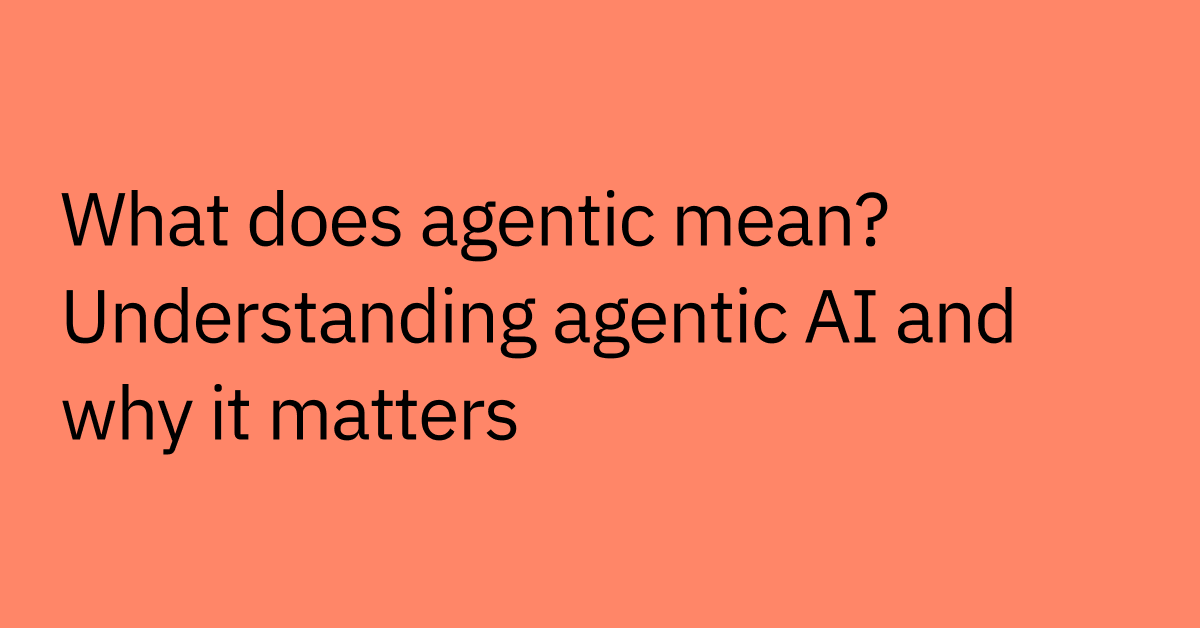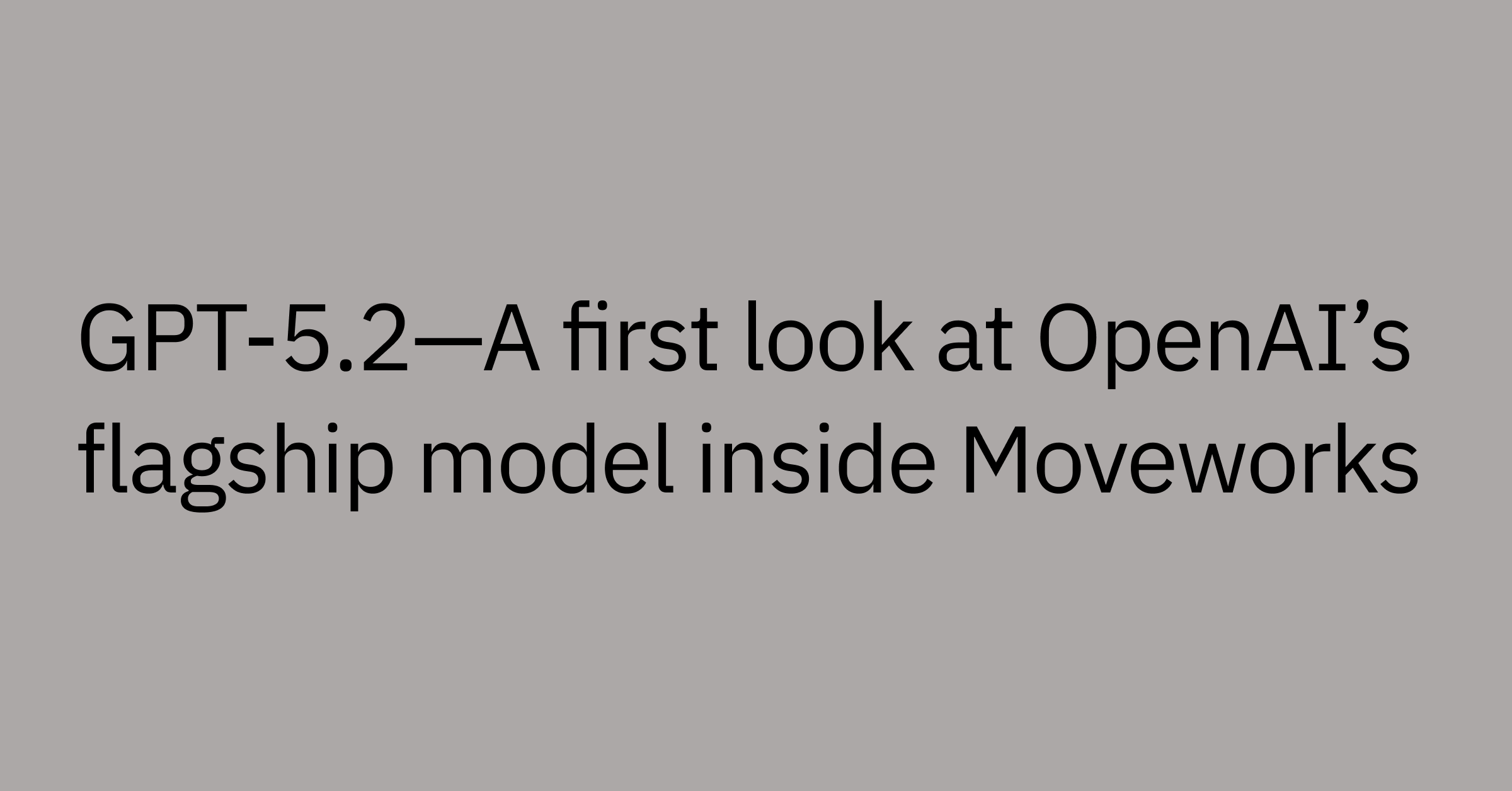Table of contents
Highlights:
- “Agentic” means having the autonomy and reasoning ability to act independently toward a goal.
- In AI, being agentic means systems can reason, plan, and take multi-step actions without human input.
- Agentic AI differs from traditional automation by adapting dynamically to changing conditions and goals.
- The term “agentic” originated in psychology and education to describe human self-direction — AI now mirrors this behavior in technology.
- Agentic AI combines large language models (LLMs), natural language processing (NLP), and machine learning (ML) to understand intent and act.
Everyone’s talking about agentic AI — and for good reason. It’s redefining how work gets done across the enterprise. In the last year alone, searches for “agentic” have surged more than 600%, as business leaders look for tools that don’t just generate information, but act on it.
According to Gartner, by 2028, 33% of enterprise software applications will include agentic AI, up from less than 1% in 2024, enabling 15% of day-to-day work decisions to be made autonomously.
But “agentic” didn’t start as a tech buzzword. The concept comes from psychology and education, where it describes ‘independently taking initiative and driving outcomes.
Now, the same principle of agency is being applied to artificial intelligence.
Agentic AI gives systems a form of autonomy: the ability to interpret context, plan multiple steps, and take action across tools and teams — without constant human hand-holding.
For your organization, that means automation that doesn’t break when workflows change, systems that can reason and adapt in real time, and employees who spend less time searching and more time achieving results.
What does agentic mean?
At its simplest, agentic means having the ability to take initiative, make decisions, and act independently toward a goal.
Instead of just reacting to prompts or executing fixed commands, agentic AI can:
- Interpret context
- Plan multi-step actions
- Execute them autonomously to reach a defined outcome
These agentic tools rely on a network of AI agents, i.e., individual AI systems built to perform specific, specialized tasks. AI agents perceive their environment, process information, and act based on defined parameters like resetting a password, drafting a summary, or retrieving a file. Agentic AI, by contrast, describes a complete system that coordinates many AI agents toward a broader goal.
Agentic tools aren’t limited to static workflows — they learn, adapt, and reason in real time.
Imagine an IT system that detects a user’s access issue and resets credentials automatically, or an HR assistant that completes a new hire’s onboarding workflow without intervention. These are examples of AI operating with agency, systems that act proactively within defined policies, permissions, and guardrails.
That ability to plan and act independently is what makes agentic AI so different from traditional automation. It introduces flexibility, governance, and reasoning into everyday workflows — turning reactive systems into proactive ones that help work get done faster, more accurately, and with less manual effort.
Capability | Basic AI | Agentic AI |
Autonomy | Responds to prompts or retrieves information. | Can initiate or advance workflows based on context and intent. |
Reasoning | Matches keywords and generates answers. | Understands goals, breaks them into steps, and determines the best path forward. |
Action | Provides information or suggestions. | Takes multi-step actions across systems (e.g., update records, triage requests, complete tasks). |
Adaptation | Performs the same behavior for every user. | Learns from patterns, tailors actions to role, history, and organizational context. |
Where the term “agentic” comes from
The word agentic comes from the idea of agency — the capacity to act independently and make choices that shape outcomes. Long before its use in technology, the term appeared in psychology and education to describe people who take initiative, make decisions, and guide their own progress.
In education, for example, a student who builds an app to deepen a coding lesson is demonstrating agency: they’re directing their learning rather than following only what’s assigned. In psychology, agency refers to self-determination — the ability to act intentionally rather than reactively.
Today, that same concept applies to artificial intelligence. Agentic AI mirrors this human quality of initiative and decision-making, expressed through software.
Just as an agentic learner identifies goals and works toward them independently, an agentic AI system interprets inputs and context, plans the next step, and acts autonomously toward an outcome.
Key characteristics of agentic AI
Agentic AI doesn’t just respond to commands — it takes goals as input, interprets context, and plans actions across systems to achieve outcomes. It’s designed to adapt and improve over time, using enterprise data so people and systems can work smarter together.
1. Autonomy
Agentic AI can take action proactively, not just reactively. It advances a workflow on its own, following organizational policies and guardrails.
Use case: HR onboarding. after a manager requests a new-hire setup, the agent can initiate account creation, request necessary approvals, and notify stakeholders without waiting for further input.
2. Goal-oriented reasoning
Instead of returning a single predicted answer, agentic AI interprets the user’s broader objective, defines sub-tasks, and works toward the complete outcome.
Use case: Procurement request. understands “order a replacement laptop,” checks eligibility and policy, collects missing details, and starts the procurement workflow.
3. Multi-step planning
It breaks complex tasks into steps, chooses the right sequence of actions, and adapts as new information appears — something traditional AI cannot reliably do.
Use case: Password reset. verifies identity, selects the right identity provider, performs the reset via API, and confirms resolution with the employee.
4. Cross-system orchestration
Agentic AI can coordinate actions across many enterprise systems — ticketing, HRIS, identity, finance, and more — reducing the handoffs and manual stitching employees normally do.
Use case: New-hire provisioning. creates IT tickets, updates Workday records, verifies equipment availability, and triggers access workflows across systems.
5. Context, memory, and enterprise awareness
Agentic AI uses short-term memory, long-term patterns, and real-time signals from APIs, event logs, and search indices. This grounding helps it make decisions that reflect the user’s role, permissions, and history.
Use case: HR policy lookup. returns the most relevant version of a policy based on the employee’s location, team, prior questions, and current context.
Why agentic AI is the next frontier of enterprise automation
Traditional tools like RPA and integration platforms (Integration Platform as a Service, or iPaaS) can connect systems and execute scripted tasks, but they can't reason beyond their workflows, so when processes change, humans have to step in to patch connections, update logic, or reconfigure data flows.
Agentic AI changes that equation.
It combines reasoning with orchestrated automation, allowing systems to interpret intent, evaluate options, and act across multiple steps and tools autonomously. Instead of relying solely on rigid, one-step triggers or struggling with new information, agentic AI can dynamically plan and execute the next step — closing the loop between information and action.
By reasoning across systems rather than relying on rigid automations, agentic AI introduces a new level of flexibility and scalability.
- IT Service Management (ITSM): Systems that can identify and fix certain access issues or potential incidents before users even file a ticket.
- HR: Automated onboarding that adapts to each role or location without constant reconfiguration.
- Finance: Workflows that reconcile invoices and flag anomalies in real time.
- Procurement: Automated approvals that verify compliance before routing requests.
These aren’t just efficiency gains — they’re shifts in how work gets done. Enterprises using agentic AI often see faster resolution times, fewer manual errors, and measurable increases in productivity and employee satisfaction.
As static automation reaches its limits, agentic AI offers what legacy tools can’t: a reasoning layer that connects systems, understands goals, and keeps work flowing across every department.
Real-world examples of agentic AI in action
Agentic AI is already transforming how enterprises operate. Across IT, HR, Finance, and Procurement, intelligent systems are planning, acting, and adapting in ways that make work faster, more accurate, and less manual.
IT: Automated issue resolution
In ITSM, agentic AI operates both in the chat interface and the system backend. It can detect access or password issues, reset credentials through identity-management integrations, and notify users directly in chat. When exceptions occur, it hands off the case to the right service team while preserving full context inside the ticketing system. The result: shorter resolution times, fewer repetitive requests, and more bandwidth for innovation.
HR: Seamless employee onboarding
For HR, agentic AI works across workflow integrations and delivers updates in the chat interface. It orchestrates onboarding workflows by granting access to tools in the backend, updating employee profiles in HRIS systems, scheduling introductions through calendar integrations, and sharing resources in chat. Employees get what they need quickly, while HR gains visibility and governance across every step.
Finance: Expense reconciliation
In finance, agentic AI runs primarily in the system backend, coordinating data across ERP and payroll systems while communicating findings in chat when needed. It matches expense reports against receipts, flags anomalies, and triggers corrections through workflow integrations. This saves hours of manual review and supports accuracy and compliance — helping finance teams close books faster.
Procurement: Intelligent approvals
In procurement, agentic AI monitors purchase requisitions in the system backend, checks policy compliance through workflow integrations, and routes approvals to stakeholders in their chat interface. By connecting data across procurement, finance, and compliance systems, it accelerates purchasing cycles while maintaining auditability.
Transform work with Moveworks agentic AI
Many enterprises are still experimenting with static automation or isolated AI tools. Moveworks takes the next step — delivering a truly agentic AI platform that unifies search, action, and extensibility across enterprise systems.
By unifying search, action, and extensibility across every enterprise system, Moveworks becomes the agentic front door to work — where employees start, and finish, what matters.
The Moveworks AI Assistant gives every employee a single conversational interface to get answers and execute tasks, while Agent Studio empowers teams to build and extend powerful AI agents across IT, HR, finance, and beyond.
At a time when most organizations are still experimenting with basic automation or isolated AI tools, Moveworks is delivering a truly agentic AI platform that understands intent, reasons through context, and autonomously takes action across your entire stack — so employees stop wasting time navigating disconnected tools and instead move straight into flow.
Frequently Asked Questions
In AI, agentic means having the ability to act autonomously toward a goal. Agentic AI systems can interpret context, plan multi-step workflows, and execute actions independently — connecting information to action without waiting for manual commands.
AI agents are individual units built to perform singular, specialized tasks. They can perceive their immediate environment, process information, and execute simple actions—such as drafting an email summary, retrieving a file, or resetting a password. These agents operate within a narrow scope and typically require human or external orchestration to combine their outputs into a multi-step workflow.
Agentic AI, by contrast, is a complete, autonomous system designed to coordinate and manage multiple AI agents to meet a high-level objective.
It doesn't just execute individual steps; it possesses the intelligence to interpret a complex goal, autonomously reason through dependencies, and dynamically decide how, when, and which agents and tools should collaborate to deliver the final outcome end-to-end.
Traditional AI and rule-based automation follow scripts or triggers. Agentic AI adds reasoning and orchestration, enabling systems to adapt dynamically, coordinate across tools, and handle many exceptions with minimal human oversight, within defined policies and guardrails.
No. Many AI tools today are reactive — providing answers or predictions, but not acting on its own. Agentic AI is able to work proactively and independently, reasoning through context and completing work end-to-end with governance and compliance built in.
Agentic AI eliminates friction in many everyday workflows by uniting reasoning and action. It helps organizations improve speed, accuracy, and employee experience — reducing manual effort while enabling more consistent outcomes across departments.
Moveworks delivers a full agentic AI platform that unifies search, action, and extensibility across enterprise systems. Its Reasoning Engine interprets goals and is able to execute actions securely and reliably, while Agent Studio lets teams select or build agents — which become accessible to employees through the conversational interfaces employees already use to boost productivity across your organization.
Machine Learning (ML) is a method for training algorithms to learn patterns and make predictions from data, making it a component within the larger field of AI.
Agentic AI is a system architecture that uses ML models to enable a high degree of autonomy and goal-oriented action. ML models are typically passive and reactive, giving a classification or prediction when prompted, whereas Agentic AI is proactive and dynamic, able to plan multi-step workflows, utilize external tools, and adapt its strategy based on real-time feedback to achieve a complex objective without constant human oversight.
In this way, ML provides the intelligence (the ability to learn), but Agentic AI provides the agency (the ability to act independently).



